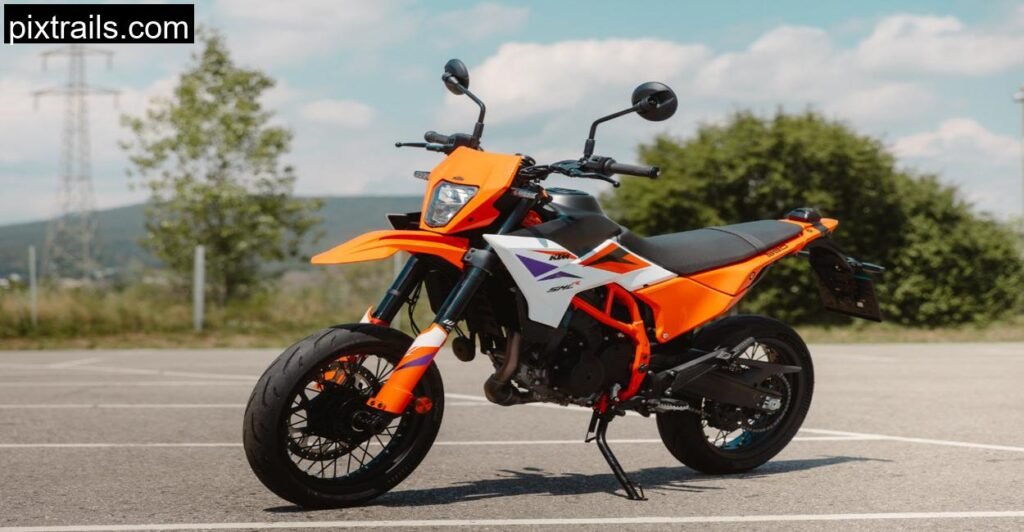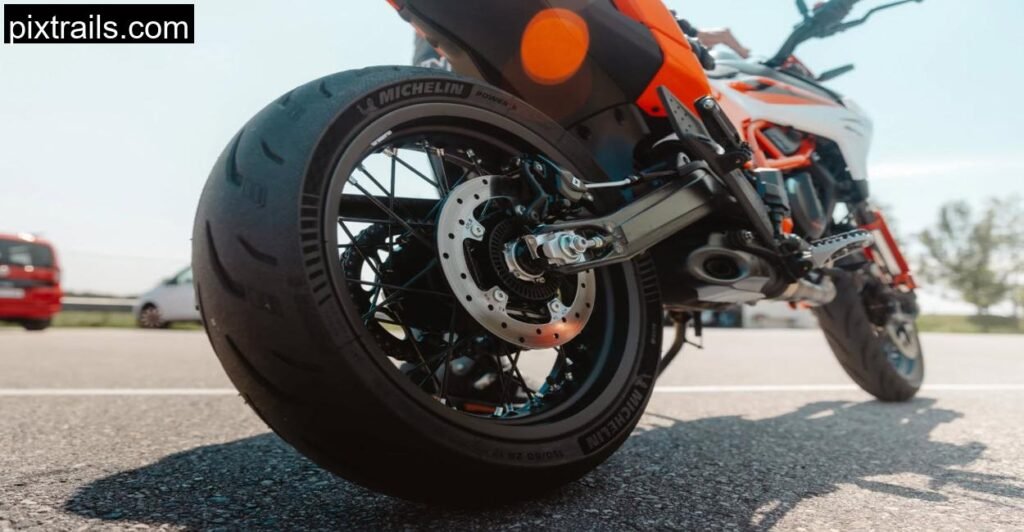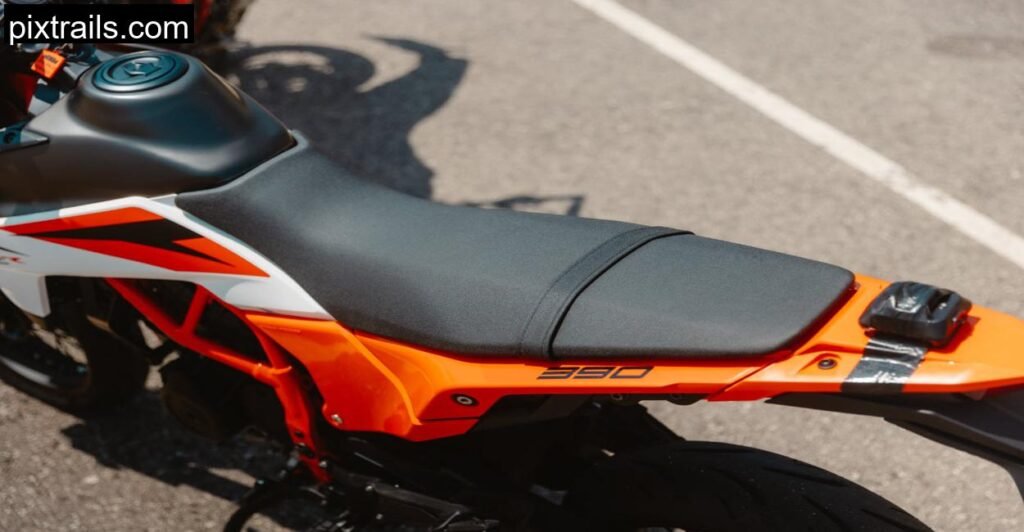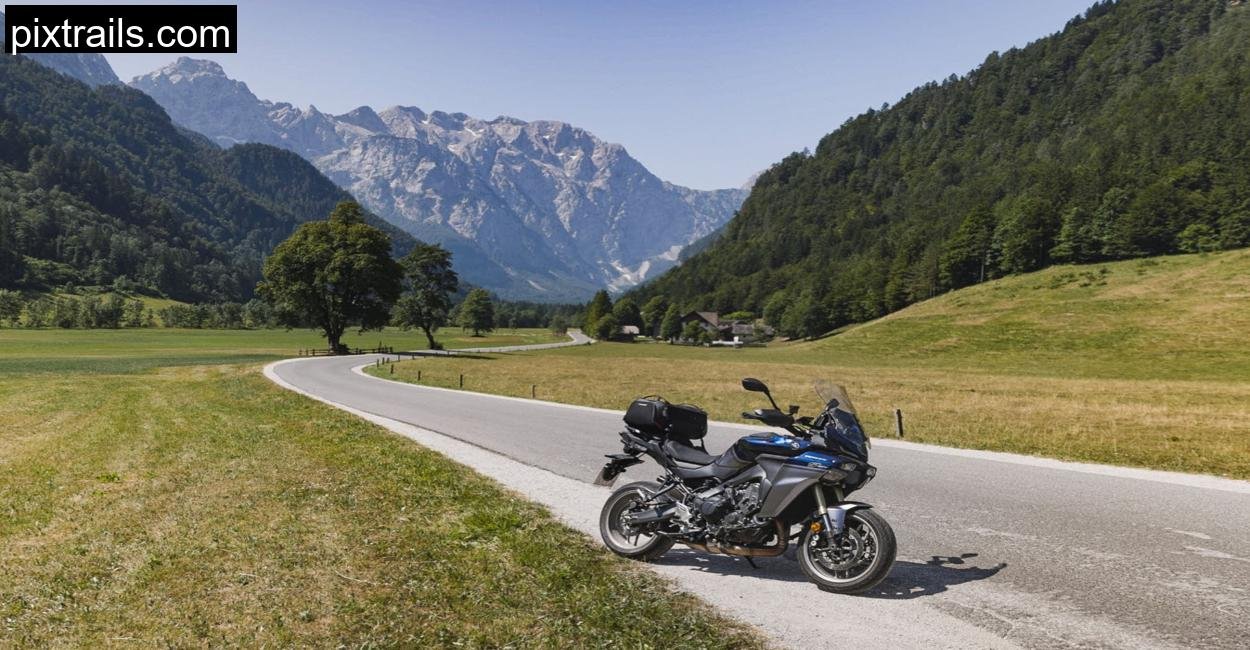I still remember stepping off the plane in Abruzzo, Italy, the warm Mediterranean breeze carrying a scent of pine and sea salt. This wasn’t just another motorcycle press trip, it felt like the perfect meeting point of culture, nature, and mechanical precision. Abruzzo is a place where mountains drop dramatically into the Adriatic Sea, where winding asphalt ribbons snake through medieval hill towns, and where every turn looks like it belongs on a postcard.
And it was here, under a late spring sun, that I met the KTM 390 SMC R, fresh from the factory in Mattighofen. This wasn’t just a casual introduction. KTM had chosen Abruzzo for a reason: the mix of tight mountain switchbacks, rugged countryside, and small-town piazzas was exactly the kind of playground where a supermoto like this could show its true character.
Before I even threw a leg over it, the bike looked every bit the modern supermoto, tall stance, wide handlebars, and that signature aggressive KTM orange flashing in the sunlight. But there was something else: a subtle maturity. This wasn’t a stripped-down hooligan machine that sacrifices everything for wheelie points. It was a bike that promised fun without completely wrecking your back or your driving record.
The Beating Heart of the KTM 390 SMC R
At its core, the 390 SMC R carries KTM’s tried-and-tested 373cc single-cylinder engine, familiar to anyone who’s ridden the 390 Duke. On paper, it’s 45 horsepower at 8,500 rpm and 39 Nm of torque at 7,000 rpm. But in practice, it feels far more alive than those numbers suggest.
In the narrow streets of Abruzzo’s hill towns, the throttle response was instant, clean, and playful. The single loves to rev, but it’s not peaky, it pulls with enough grunt to lift the front if you’re feeling cheeky, yet it’s smooth enough for steady cruising. KTM has given the electronics a proper supermoto twist: traction control tuned for playful slides, cornering ABS with a “Supermoto” mode (which lets you lock the rear for that classic supermoto drift), and riding modes that actually make a difference in how the power comes on.
The underfloor exhaust is another neat touch, it keeps weight low, improves balance, and keeps the look clean without a bulky muffler sticking out like a sore thumb. On Abruzzo’s endless corners, that lower center of gravity was obvious. The bike flicked side to side like a bicycle, and the exhaust note, deep and raspy, bounced off stone walls in the mountain villages like a street soundtrack.
Handling in the Mountains and the City

If the engine is the heart, then the chassis is the personality, and here’s where the 390 SMC R really shines. KTM took the 390 Duke’s base but sharpened it for supermoto life: steeper steering geometry, a revised swingarm, and a new subframe for better rigidity.
In the Abruzzo highlands, I aimed for every roundabout, every backroad hairpin, just to feel that front-end precision again. The WP APEX suspension (230 mm travel front and rear) was fully adjustable, but I didn’t touch a single clicker. Out of the box, it was sporty without being punishing, soaking up rough tarmac but still delivering a planted, confidence-inspiring feel when I pushed into tight turns.
Braking was equally reassuring. Up front, a single 320 mm disc with a ByBre twin-piston caliper did the job with sharp bite and no fade, even after repeated hard stops on the descent from Campo Imperatore. Out back, the 240 mm disc worked perfectly for controlled slides in Supermoto mode. I didn’t just feel like I was riding; I felt like I was playing.
Real-World Comfort and Everyday Use
Let’s be honest, supermotos have a reputation for being terrible on long rides. Tall, thin seats, cramped fuel range, and suspension tuned to knock fillings loose. But the KTM 390 SMC R breaks that stereotype in subtle ways.
The 860 mm seat height is tall, but not intimidating for average riders. The seat padding is surprisingly forgiving for a supermoto, after 100 km in the saddle, I still felt fresh. The upright riding position, wide bars, and narrow tank made it easy to maneuver both in Abruzzo’s tight cobblestone streets and in open country sweepers.
The fuel tank isn’t huge, but combined with the frugal nature of the 373cc single, I managed well over 200 km before the low-fuel light flickered on. That’s not adventure bike territory, but it’s more than enough for a day’s worth of spirited riding.
Technical Specifications – KTM 390 SMC R (2025)
These technical specifications are as listed by the manufacturer on KTM’s official site. For the latest updates, always refer to the brand’s official source.
| Specification | Detail |
| Engine Type | 373cc, liquid-cooled, single-cylinder, 4-stroke |
| Bore x Stroke | 89 mm x 60 mm |
| Power Output | 45 hp @ 8,500 rpm |
| Torque | 39 Nm @ 7,000 rpm |
| Transmission | 6-speed, optional quickshifter |
| Clutch | Slipper clutch (PASC) |
| Frame | Steel trellis frame, powder-coated |
| Front Suspension | WP APEX 43 mm USD fork, fully adjustable, 230 mm travel |
| Rear Suspension | WP APEX monoshock, fully adjustable, 230 mm travel |
| Front Brake | 320 mm disc, ByBre twin-piston caliper, ABS |
| Rear Brake | 240 mm disc, single-piston caliper, Supermoto ABS |
| Seat Height | 860 mm |
| Fuel Tank Capacity | 9.5 liters |
| Weight (Fully Fueled) | Approx. 163 kg |
| Electronics | TFT display, traction control, cornering ABS, Supermoto mode |
| Exhaust | Underfloor exhaust system |
Performance in Abruzzo – The Real Test

Abruzzo gave me everything I needed to understand the KTM 390 SMC R. The coastal roads near Pescara showed off its agility in fast sweepers. The mountain climb to Rocca Calascio, complete with hairpins stacked like staircases, proved its ability to change direction effortlessly. And the narrow lanes of Santo Stefano di Sessanio reminded me why a lightweight bike with quick reflexes is king in Europe’s ancient towns.
But my favorite moment came at the top of Campo Imperatore. The plateau stretched endlessly, with a ribbon of tarmac cutting through a lunar-like landscape. No traffic, perfect visibility, and corners that seemed designed by a motorcyclist. I dropped into Supermoto mode, killed rear ABS, and let the rear wheel dance under braking before flicking it into the next bend. This wasn’t just transportation, it was pure, grinning, laugh-inside-your-helmet fun.
Living with the KTM 390 SMC R

Beyond the thrills, this is a surprisingly easy bike to own. The 10,000 km service interval is almost unheard of for a high-compression single. Fuel economy is respectable, and KTM’s parts network in Europe makes maintenance painless. The build quality felt solid, controls had a premium feel, the TFT dash was crisp and easy to read even in bright sunlight, and the paintwork looked ready to handle years of use.
If I had to nitpick, the mirrors vibrated at high rpm, and riders under 5’7” might find the seat height a stretch. But honestly, these are minor points in what is otherwise a very balanced package.
Conclusion – KTM Has Nailed the Sweet Spot
The KTM 390 SMC R isn’t pretending to be a 690, and it’s not a rebadged Duke. It’s its own thing, a bike that captures the playful spirit of supermoto without demanding race-level commitment from its rider. It’s light enough to flick through corners, powerful enough to keep you entertained, and comfortable enough to ride all day through regions like Abruzzo without feeling like you’ve gone a few rounds in a wrestling ring.
This is a bike that doesn’t just handle well, it makes you want to find excuses to ride. And in the end, that’s the biggest compliment I can give it.
Is the KTM 390 SMC R good for beginners?
Yes, it’s A2-license compliant, lightweight, and forgiving, yet still offers enough performance to grow with you.
How does KTM 390 SMC R handle on the highway?
It can cruise at 110–120 km/h without stress, though wind protection is minimal, it’s still a supermoto.
Is KTM 390 SMC R only for city riding and twisty roads?
While it shines in urban and mountain settings, it can handle short highway stints and even some light gravel tracks.










